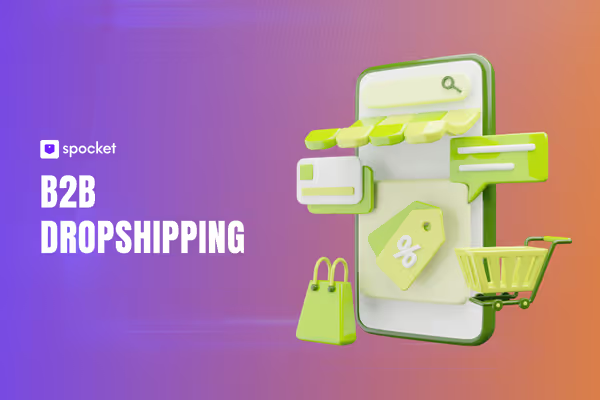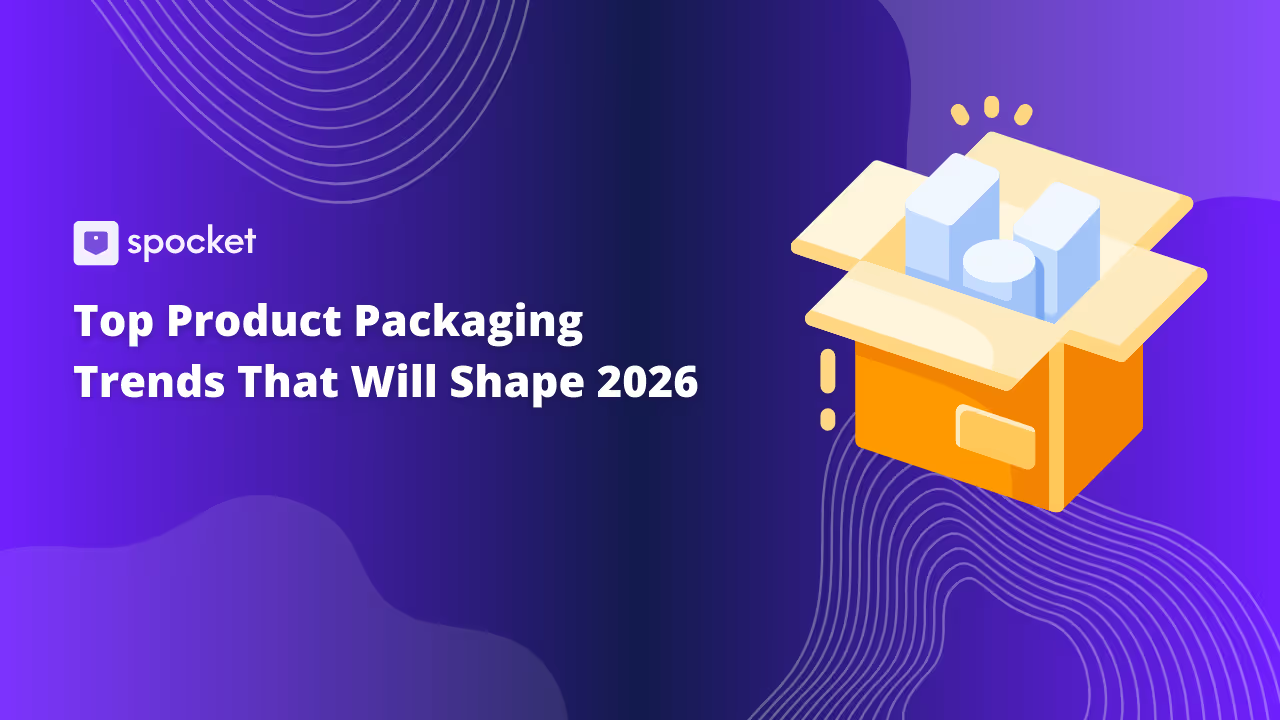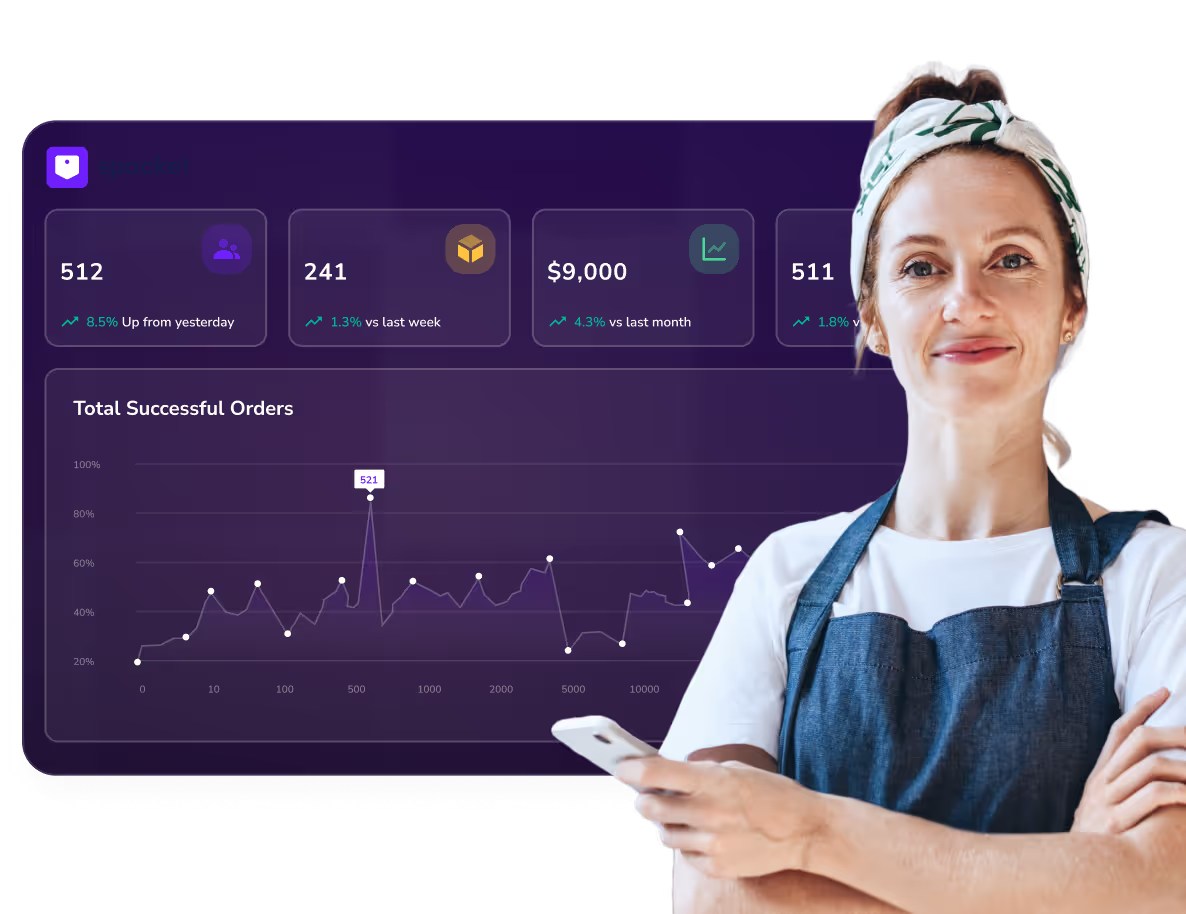So, you’ve heard of dropshipping, but what about B2B dropshipping? Here’s the deal: it’s all about selling products in bulk to other businesses without ever touching the inventory. Imagine running a wholesale business without worrying about storage, shipping, or handling products yourself. Sounds pretty good, right?
In 2026, B2B dropshipping is growing rapidly because it allows entrepreneurs to tap into huge markets without the usual headaches of traditional wholesale. You can focus on growing your business while reliable suppliers handle the heavy lifting. Whether you’re supplying other retailers or serving niche markets, this model lets you scale quickly and keep costs low.
It’s the future of wholesale, and businesses are catching on fast. Let’s explore why B2B dropshipping might be exactly what you need to take your business to the next level!
B2B vs B2C Dropshipping: Which Model Works Best in 2026?

Before diving into B2B dropshipping, let’s take a moment to compare it with its more common counterpart — B2C dropshipping (business-to-consumer). While both models allow you to sell products without holding inventory, the target market, order volume, and business strategies differ quite a bit. Understanding these differences is key to deciding which one works best for your business.
Key Operational Differences (Pricing, MOQs, Fulfillment)
B2C dropshipping focuses on individual consumer orders, so the quantities per order are usually smaller, meaning lower minimum order quantities (MOQs) and lower-priced items. You’ll likely see faster fulfillment times since customers expect quick deliveries. In contrast, B2B dropshipping deals with larger, bulk orders for other businesses, typically with higher MOQs and products priced at a wholesale rate. As a result, you’re dealing with a slower turnaround and more complex logistics, but the profit margins tend to be higher.
When to Choose B2B Over B2C
If you’re looking to grow a scalable business with larger, recurring orders, B2B is the way to go. It’s all about building long-term relationships with businesses, not just one-off sales to individual customers. On the other hand, B2C might be a better fit if you're targeting smaller quantities and want to quickly respond to consumer demand. Ultimately, choosing between B2B and B2C depends on your goals — are you looking for higher profit per sale with more long-term partnerships or faster-moving, smaller transactions?
Real Business Examples of Each Model
Let’s look at some real examples to put things into perspective. Many established businesses, like Spocket users, thrive with B2B models by supplying niche products to retailers or wholesalers who need bulk orders at a competitive price. On the flip side, companies like H&M and Nike use the B2C model to sell directly to consumers, focusing on fast turnover and consumer trends.
Whether you're diving into bulk wholesale or working with individual consumers, knowing the core differences between these models will help you make the right choice for your business in 2026.
Benefits of B2B Dropshipping for Modern Wholesalers
Now that we’ve compared B2B and B2C dropshipping, let’s explore the key advantages of jumping into B2B dropshipping. There’s a reason why more entrepreneurs are making the shift to this model in 2026. It offers several unique benefits that can lead to higher profitability and easier scalability for your business.
High-Volume Orders Without Inventory Risk
One of the biggest advantages of B2B dropshipping is that you can sell products in bulk without ever needing to store them yourself. Instead of dealing with small consumer orders, you're selling larger quantities of products directly to other businesses. This means higher profit per order without having to worry about managing inventory, storage costs, or order fulfillment. All of that is handled by your suppliers.
Scalability Across Niche Segments
Another significant benefit of B2B dropshipping is the scalability it offers. Because you’re dealing with bulk orders, you have the opportunity to reach a larger market with less effort. You can focus on expanding your supplier relationships and reaching businesses in multiple niches, rather than trying to constantly attract individual customers. This gives you the flexibility to diversify your product range and serve different industries without the typical growing pains of a B2C model.
Easier Expansion into US Dropshipping Markets
For international businesses looking to tap into the US market, B2B dropshipping is an excellent route. With platforms like Spocket offering US-based suppliers, you can fulfill orders faster and offer more reliable shipping. This makes it easier to break into the US market, particularly if you’re catering to businesses that need quick, bulk orders. Faster shipping and reliable suppliers can give your business a competitive edge and attract more B2B clients looking for efficiency.
Challenges in B2B Dropshipping (And How to Solve Them)
While B2B dropshipping offers plenty of opportunities, it's not without its challenges. Like any business model, there are obstacles you’ll need to navigate to ensure success. Let’s look at some common challenges in B2B dropshipping and discuss how you can overcome them.
1. Supplier Reliability

In B2B dropshipping, your entire operation relies on the suppliers you choose. If they fail to deliver on time, provide poor-quality products, or don’t communicate well, it can seriously impact your reputation and customer satisfaction.
Solution: It’s essential to thoroughly vet suppliers before you commit to a long-term partnership. Always order samples to check product quality, and make sure to have clear communication channels with your suppliers. Platforms like Spocket can help you find reliable suppliers with a proven track record, especially those based in the US and EU, where shipping times tend to be faster and more reliable.
2. MOQ and Inventory Conflicts
Minimum order quantities (MOQs) can often be a challenge in B2B dropshipping, especially if you’re just starting out. Some suppliers may require you to buy in bulk, even if you're just testing the waters, which can be risky for your cash flow. Additionally, managing inventory levels without physical stock can lead to issues like overselling or stockouts.
Solution: Work with suppliers who have flexible MOQs, or find dropshipping platforms that allow you to set your own MOQ thresholds. It’s also crucial to implement an inventory management system that syncs your store’s data with your suppliers to avoid these conflicts. Spocket offers tools that automate order fulfillment and sync inventory levels in real-time, helping you manage this issue smoothly.
3. Complex Return Policies
In B2B dropshipping, return policies can be far more complex than in B2C. Since you’re dealing with bulk orders, managing returns can quickly become a logistical nightmare. Businesses may return products for a variety of reasons, including damaged goods, incorrect orders, or customer dissatisfaction.
Solution: Set clear expectations from the start with both your suppliers and your customers. Make sure your return policies are transparent and agreed upon upfront. For example, you can negotiate return terms with suppliers and ensure that your business customers understand the process before placing large orders.
4. Managing Expectations in Long-Term B2B Deals
Building strong, long-term relationships with B2B clients is essential, but it can be tricky when you're dealing with different time zones, business hours, and communication styles. Misunderstandings about expectations can lead to dissatisfaction, even if everything else is going smoothly.
Solution: Be proactive in setting clear expectations from day one. This includes outlining pricing structures, shipping times, and the overall fulfillment process. Regular check-ins with your clients and suppliers can ensure that everyone is on the same page, minimizing the risk of issues down the line.
How to Start a B2B Dropshipping Business: Step-by-Step
Now that we've covered the benefits and challenges of B2B dropshipping, let’s dive into the practical side of things. Starting a B2B dropshipping business is easier than you might think — with the right strategy and tools, you can get your store up and running quickly. Here's a step-by-step guide to help you get started.
Step 1 – Identify a Profitable Wholesale Niche
The first step in starting a B2B dropshipping business is selecting a niche. Instead of targeting broad, consumer-focused categories, you’ll need to focus on wholesale markets where businesses are looking for bulk products. Think about industries that require constant supply — office supplies, industrial tools, packaging materials, or even niche markets like eco-friendly products or health supplements.
Tip: Look for gaps in the market where there’s demand but limited competition. Tools like Google Trends and keyword research platforms can help identify trending products.
Step 2 – Choose a Reliable B2B Dropshipping Platform

Next, you'll need to choose the right platform to run your B2B dropshipping business. While platforms like Shopify and WooCommerce are popular choices for B2C dropshipping, B2B businesses have slightly different needs. You’ll want a platform that supports bulk orders, integrates with your suppliers, and allows for invoicing and customization.
Platforms like Spocket are a great choice because they offer a curated network of reliable US and EU-based suppliers, ensuring faster shipping and higher product quality. Plus, Spocket integrates easily with Shopify and WooCommerce, making the process smoother from the start.
Step 3 – Source & Vet Your B2B Dropshipping Suppliers
Choosing the right suppliers is one of the most important steps in starting a successful B2B dropshipping business. Without a reliable supply chain, your entire business can falter. It’s essential to carefully vet suppliers before committing to a partnership.
How to find dropshipping suppliers:
- Look for dropshipping suppliers that specialize in B2B and offer bulk order options.
- Evaluate their track record: look at reviews, product quality, and reliability.
- Start with suppliers from platforms like Spocket, which already provide vetted, high-quality suppliers.
Step 4 – Set Up Your Online Storefront for B2B Buyers
Once you have your niche and suppliers lined up, it’s time to build your online storefront. B2B eCommerce is different from B2C — your website needs to be able to handle bulk orders, provide pricing tiers, and manage complex invoicing. Choose an eCommerce platform like Shopify or WooCommerce that supports B2B features like:
- Wholesale pricing
- Bulk discounts
- Customizable checkout options for B2B buyers
If you're using Spocket, this will integrate seamlessly with your eCommerce platform to display real-time product availability and prices, creating a smooth experience for your business customers.
Step 5 – Automate Fulfillment and Communications

The beauty of dropshipping is that you don’t have to handle the physical products — your suppliers do. However, as a B2B business, you'll need to manage large orders efficiently. This is where automation comes in.
To automate your processes, use tools that integrate order fulfillment, inventory management, and invoicing. Spocket offers automatic order routing to your suppliers, ensuring that orders are fulfilled as soon as they are placed. This automation saves you time and reduces the chances of human error. Additionally, make sure to set up clear communication with your suppliers and clients to keep everyone updated on order status.
Pricing Strategy for B2B Dropshipping
One of the key factors in ensuring the success of your B2B dropshipping business is having a solid pricing strategy. Since B2B dropshipping involves bulk orders, the way you price your products can make or break your profit margins. In this section, we’ll walk through the best practices for setting prices that both attract business customers and leave room for your profit.
How to Price B2B Products with Higher Margins
In B2B dropshipping, you often deal with larger orders and bulk discounts. While this might seem like you’ll be earning less per unit, the higher volume of the sale compensates for it. Your pricing strategy should reflect this. Here are a few tips to help you price your products effectively:
- Tiered Pricing: Offer discounts based on the quantity a customer buys. For example, if a client buys 100 units, they get a 5% discount; if they buy 500 units, they get a 10% discount. This incentivizes bulk orders and ensures a consistent stream of business.
- Competitive Pricing: Research competitors in your niche to see what price range you're up against. Offering a lower price can make your store more attractive, but don't forget to factor in your suppliers’ costs and your desired margins.
- Include Shipping Costs: In B2B, shipping costs can add up quickly. Include shipping in your pricing or clearly outline it as a separate fee, so there are no surprises for your customers.
Negotiating Wholesale Pricing with Dropship Vendors
One of the best ways to increase your profit margins is by negotiating favorable terms with your suppliers. Using quoting software can streamline this process by generating accurate, professional quotes in seconds—helping you present your pricing structure clearly during negotiations. When you're working with dropship vendors, here are some negotiation tips to help you get better prices:
- Leverage Volume: Suppliers are often willing to offer better pricing for higher volume orders. If you can guarantee large or recurring orders, use that leverage to negotiate a better rate.
- Establish a Long-Term Relationship: Developing a long-term partnership with your suppliers can open doors for better pricing. They’ll be more willing to offer discounts or exclusive deals to reliable business partners.
- Negotiate Payment Terms: Payment terms can affect your cash flow. See if your supplier will offer net terms, which give you more time to pay for the products after receiving them, allowing you to resell first.
Marketing a B2B Dropshipping Store (That Converts)
Marketing is just as important in B2B dropshipping as it is in B2C. However, B2B marketing requires a different approach because you're selling to other businesses, not individual consumers. Your strategy needs to be focused on building long-term relationships, targeting the right business clients, and showcasing your value in a way that appeals to businesses. Let’s dive into how to market your B2B dropshipping store effectively.
LinkedIn Outreach for Corporate Clients
When you're in the B2B space, LinkedIn is one of the most powerful tools for connecting with potential clients. Unlike B2C businesses, B2B businesses need to target decision-makers at companies, and LinkedIn allows you to do that directly. Here’s how to use LinkedIn for outreach:
- Connect with key decision-makers: Research the right people to contact at target companies, such as procurement managers or supply chain officers.
- Send personalized messages: Avoid generic connection requests. Instead, craft personalized messages that explain how your dropshipping service can help their business.
- Post content regularly: Share case studies, testimonials, and product updates to demonstrate your value.
Google Ads + SEO for Long-Tail Industrial Queries
When businesses search for products, they often use very specific keywords related to their industry. Unlike consumer-focused keywords, B2B queries are typically more technical and precise. To attract these businesses, you need to focus on long-tail keywords.
- Long-tail keywords: Think about what a business would search for when looking to buy in bulk, like “wholesale office supplies” or “bulk eco-friendly packaging.” These terms may have lower search volume but are often highly targeted and more likely to convert.
- Google Ads: Invest in Google Ads with targeted keywords to get in front of the right audience. You can set up campaigns that focus on B2B product searches in your niche.
Trade Shows and Industry Portals for B2B Lead Gen
Attending or even exhibiting at trade shows can be a highly effective way to market your B2B dropshipping business. These events bring together businesses in your industry, giving you the opportunity to network and build relationships.
- Leverage your booth: Set up a booth at industry trade shows to showcase your products, meet potential clients, and build trust.
- Industry portals and directories: Many industries have B2B-specific platforms where companies look for wholesale suppliers. By listing your business in these directories, you can get direct access to clients actively seeking your products.
Scaling Your B2B Dropshipping Business
Once you’ve established your B2B dropshipping business and are seeing consistent sales, the next step is scaling. Scaling your business allows you to reach more customers, offer more products, and grow your profits. But scaling isn’t always easy—it requires smart strategies and the right tools. Whether you're expanding product lines or looking for new ways to boost your storage business, focusing on efficiency and customer satisfaction is key. Let’s dive into how you can scale your B2B dropshipping business successfully.
Adding Private Label Products for Brand Control
As your B2B dropshipping business grows, consider adding private label products to your inventory. Private labeling allows you to rebrand existing products with your company’s logo and packaging. This gives you more control over product differentiation and can help you stand out from competitors.
- Higher profit margins: Private label products typically offer higher margins since you can set your own price based on your brand's value.
- Brand loyalty: Offering your own branded products can help you build a loyal customer base, as businesses will prefer your unique offerings over generic ones.
If you’re already working with reliable suppliers through platforms like Spocket, you can easily explore private label options to expand your product range.
Expanding into New Regions (with Local Vendors)
As your business stabilizes, it’s time to look at expanding into new regions. This could mean reaching out to other parts of your country or even internationally. Working with local vendors in new regions can help you reduce shipping times and cater to more businesses looking for reliable suppliers.
- International suppliers: If you’re currently sourcing from US-based suppliers, consider expanding to other countries with suppliers that offer competitive prices and faster shipping times.
- Local warehouses: Establish relationships with vendors that have local warehouses, so you can reduce shipping times significantly for new regions.
Using Analytics to Optimize Supplier Performance
The key to scaling any business lies in continuous optimization. With B2B dropshipping, you can use analytics to track key metrics like order volume, supplier performance, and profit margins. This helps you identify which suppliers and products are performing the best.
- Data-driven decisions: Use data to make decisions about which suppliers you should focus on or which products you need to drop from your store.
- Supplier scorecards: Create scorecards that evaluate your suppliers on factors like order fulfillment speed, product quality, and customer satisfaction. Regularly review this data to ensure you're working with the best partners.
Conclusion: Why B2B Dropshipping Is the Future of Wholesale
B2B dropshipping presents an exciting opportunity for businesses to scale without the traditional risks of holding inventory. By tapping into bulk orders and fostering long-term relationships with other businesses, you can position yourself for growth with lower upfront costs. Whether you’re looking to target niche markets or expand your reach globally, the B2B model offers flexibility and the potential for consistent, high-volume sales.
To set yourself up for success, choose reliable suppliers and platforms that automate processes, like Spocket, which connects you to trusted US and EU-based suppliers. With Spocket’s seamless integration, you can simplify product sourcing, streamline order fulfillment, and focus on scaling your B2B dropshipping business efficiently. Ready to dive in? Start building your B2B dropshipping business with Spocket today and see the potential for growth!







































